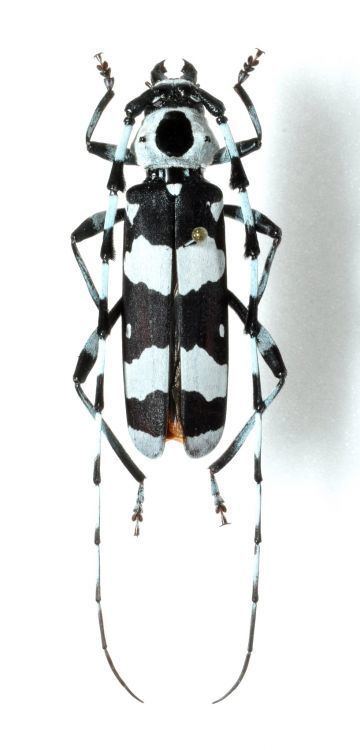Genus Rosalia Rank Species | ||
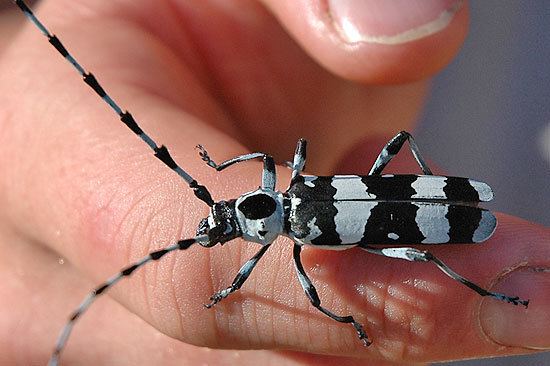 | ||
Similar Rosalia, Cottonwood borer, Compsocerini, Megacyllene robiniae, Derobrachus geminatus | ||
Banded alder borer rosalia funebris
The banded alder borer, Rosalia funebris, is a member of the very diverse family of longhorn beetles.
Contents
- Banded alder borer rosalia funebris
- Rosalia funebris
- Appearance
- Distribution
- Larvae
- Food
- Sound
- Other Rosalia species
- References
Rosalia funebris
Appearance
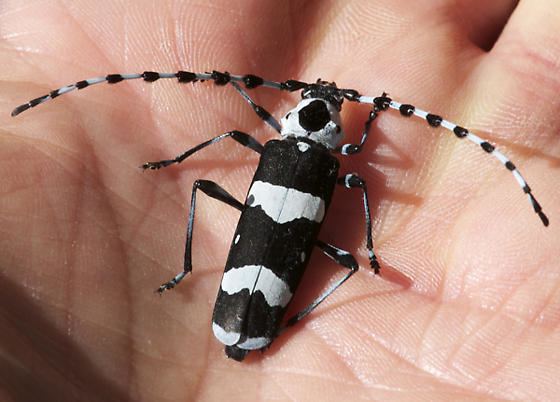
Like many others in the family Cerambycidae, R. funebris has strikingly colored wing covers (elytra). The elytra are dark with three white bands. The thorax (pronotum) is white with a large black spot. The alder borer's antennae are banded white and black. The male's antennae are longer than his body, but the female's are shorter. Long and narrow, the body of R. funebris may grow to be 38 millimetres (1.5 in).
Distribution
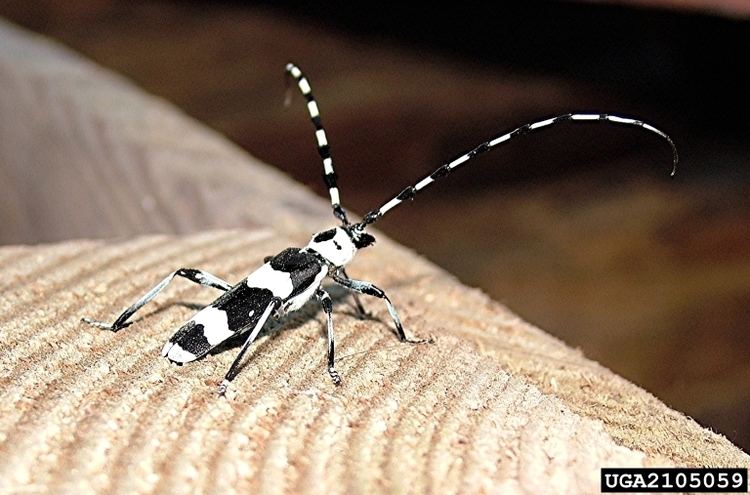
Located along western North America, Alaska through California, and in New Mexico, the banded alder borer may be found in the spring and summer on the bark of alder trees.
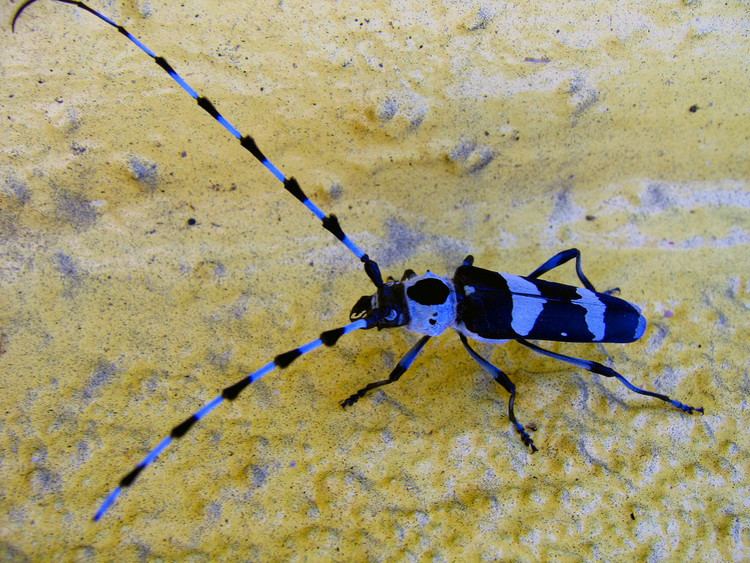
The exact reason (pheromone?) is unknown, but R. funebris is drawn to recently painted buildings and may be found, in multitudes, resting on the paint.
Larvae
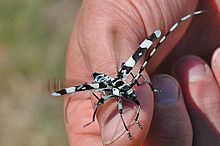
The adult wood-boring beetles lay their eggs in a crevice of the bark on hardwood trees such as Oregon ash, New Mexico willow, and California laurel/Oregon myrtle. From there the larvae bore into the wood. Unlike the oval (in cross-section) tunnels of the Buprestidae larva, larval Cerambycidae tunnels are circular (in cross-section) and will generally go straight for short distances between turns.
Food
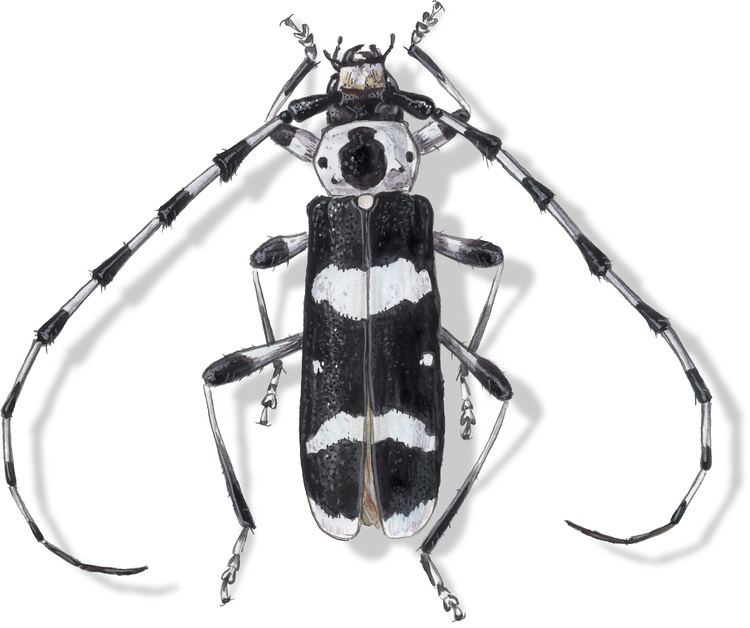
Most mature Cermabycidae feed on flowers. The larvae consume wood. The species generally prefers downed trees, instead of living trees, so the alder borer is not considered a pest
Sound

When handled or threatened R. funebris makes an audible noise similar to that of a squeaky running shoe, or a hissing sound much like air being let out of a bike tire.
Other Rosalia species
